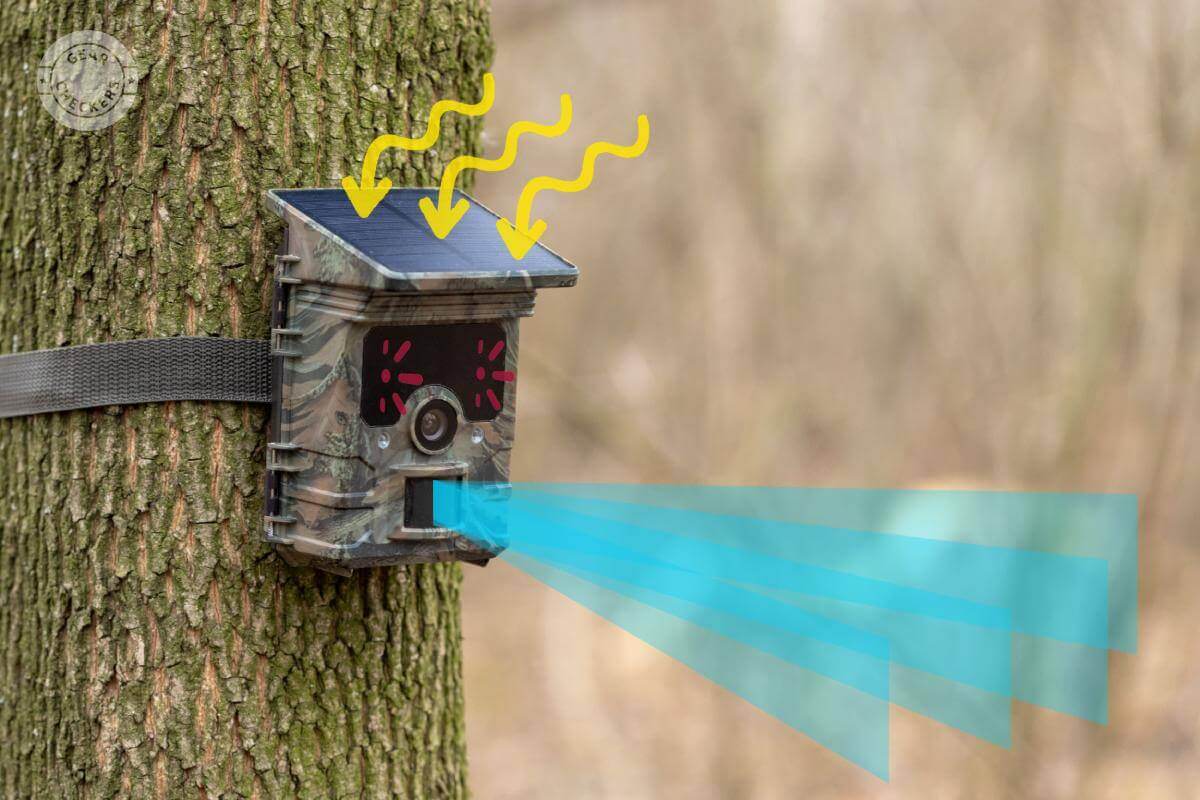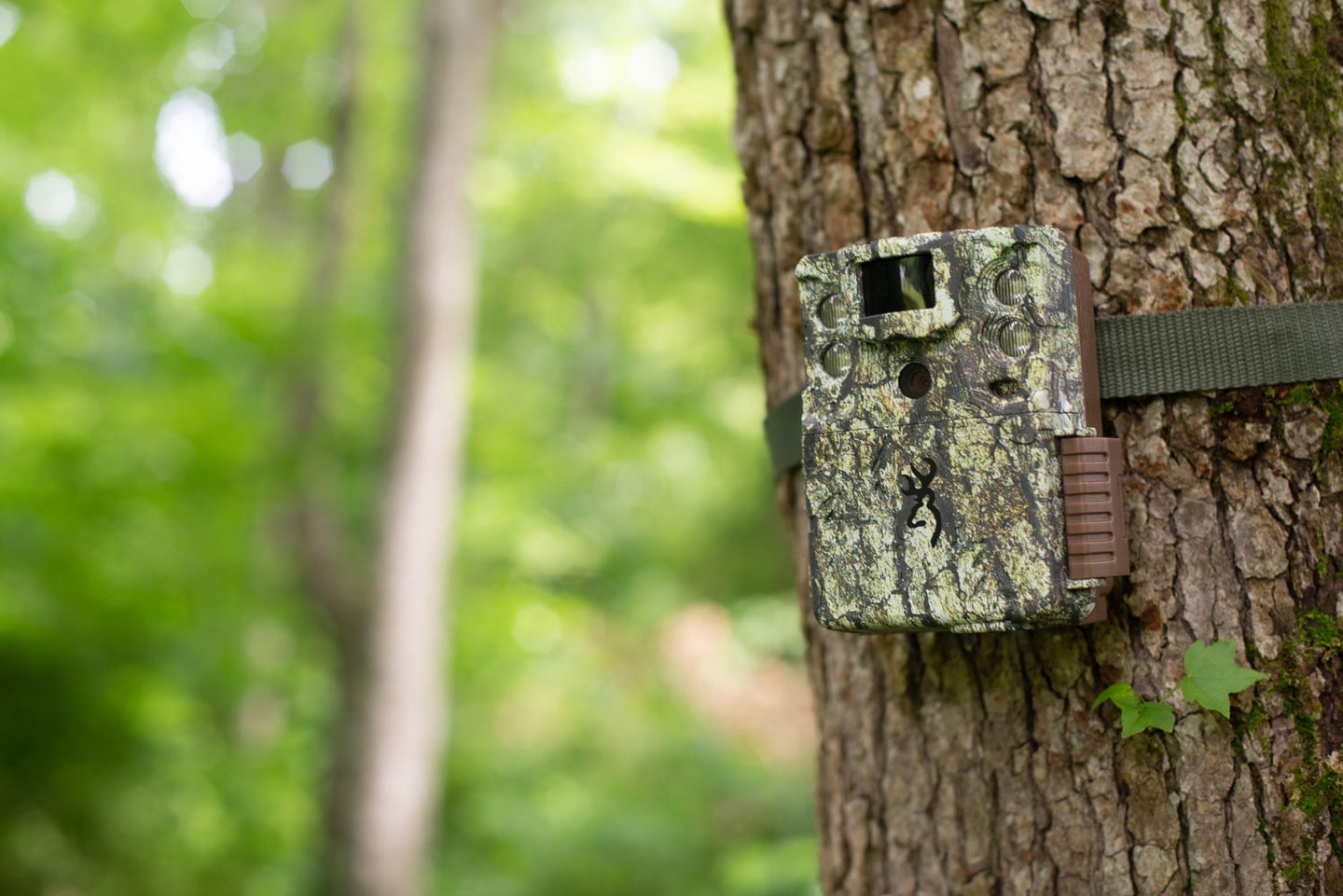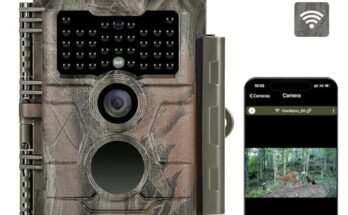Have you ever wondered what really goes on in the woods when no one’s watching? Maybe you’ve caught a glimpse of a fox darting away or heard the distant call of an owl, but wished you could see more—without disturbing the natural rhythm of wildlife.
That’s where a wildlife camera comes in. Whether it’s your own backyard or a favorite hiking trail, these clever little tools can reveal a hidden world full of wonder. Imagine reviewing your footage to find deer gently grazing at sunrise or watching a curious raccoon investigate your setup under the cover of night. It’s like stepping into your own private nature documentary.
This guide will show you exactly how to get started—from picking the right camera to finding the perfect location and capturing truly magical moments. You’ll learn how to use a wildlife camera not just as a tool, but as a window into nature’s secret life—bringing you closer to the wild than ever before. Ready to see what you’ve been missing? Let’s dive in.
Choosing The Right Wildlife Camera
Choosing the right wildlife camera is crucial to capturing those perfect shots of the great outdoors. Whether you’re a seasoned wildlife photographer or a beginner looking to explore nature, the right camera can make all the difference. But with so many options available, how do you decide which one suits your needs best?
Camera Types
Wildlife cameras come in various types, each designed for different needs. Trail cameras are excellent for capturing images of animals in their natural habitats without disturbing them. These cameras are often camouflaged and weatherproof, ideal for long-term outdoor use.
On the other hand, DSLR cameras with telephoto lenses offer high-quality images and flexibility. They allow you to adjust settings manually, providing greater control over your shots. If you’re aiming for high-resolution photographs, this might be the way to go.
Have you ever considered using a smartphone adapter for wildlife photography? Some adapters allow you to attach your phone to binoculars or spotting scopes, offering a budget-friendly alternative with decent quality.
Key Features To Consider
When selecting a wildlife camera, consider the resolution. A higher resolution means clearer and more detailed images. Look for cameras with at least 12 megapixels for good quality photos.
Battery life is another critical feature. Wildlife cameras often need to be left unattended, so choose one with a long battery life or solar charging capabilities.
Think about the camera’s trigger speed. A fast trigger speed ensures you don’t miss any action, especially with fast-moving animals. Does your chosen camera have a quick response?
Budget-friendly Options
Not all great wildlife cameras need to break the bank. Many affordable options offer excellent features for beginners. Brands like Bushnell and Campark provide quality trail cameras under $100, perfect for those just starting out.
Refurbished cameras can also be a smart choice. They often come with warranties and have been tested for quality. Have you explored this option?
Consider investing in a decent used DSLR. You can find good deals online, and pairing it with a second-hand lens can keep costs down while still delivering beautiful images.
Choosing a wildlife camera is a personal journey. What features matter most to you? By understanding your specific needs and exploring the options available, you can capture the beauty of wildlife without any hassle. Happy photographing!
Ideal Locations For Placement
Choosing the right spot for your wildlife camera can make a big difference. Capturing stunning footage relies heavily on strategic placement. Finding these spots requires a bit of research and understanding.
Habitats And Animal Trails
Begin by identifying the habitats where animals are likely to roam. Look for signs like tracks or droppings. Animal trails often reveal paths frequently traveled by wildlife. These trails lead to sources of food or water. Place cameras near clearings or crossings. These spots increase the chance of capturing moving animals.
Weather And Environmental Factors
Weather plays a crucial role in camera placement. Avoid areas prone to flooding or heavy rain. Select spots sheltered from harsh winds. This prevents camera shake and blurry images. Consider sun exposure. Too much direct sunlight can wash out photos. Choose shaded areas for balanced lighting.
Avoiding Human Disturbance
Keep cameras away from human activity. Human presence can scare away wildlife. Look for remote locations far from trails. Avoid placing cameras near roads or campsites. This ensures animals behave naturally without feeling threatened. Choose spots that blend with surroundings. This keeps cameras discreet and hidden from view.
Setting Up Your Camera
Setting up a wildlife camera requires selecting an optimal location for capturing animal activity. Ensure the camera is securely mounted and angled correctly. Adjust settings for the best image quality and sensitivity to detect movement effectively.
Setting up your wildlife camera effectively is crucial to capturing the best shots of elusive creatures in their natural habitat. A little preparation goes a long way in ensuring your camera is ready to capture the perfect moment. Let’s dive into some practical tips that can make a significant difference in your wildlife photography experience.
Mounting Techniques
Mounting your wildlife camera securely is essential for clear and stable images. Use a sturdy tree or post as a base. Consider using bungee cords or straps for a solid hold. Ensure the camera is facing the path animals are likely to take. This increases the chances of capturing them in action. If you’re in a windy area, double-check the security to prevent unwanted movement.
Optimal Height And Angle
The height and angle of your camera can impact the quality of your images. Generally, setting the camera at waist height is a good start. This is usually where most wildlife activity occurs. Experiment with angles to find what works best for your location. A slight downward tilt can sometimes provide a better view of smaller animals.
Camouflage Tips
To avoid spooking wildlife, camouflage your camera. Use natural materials like leaves and branches to blend it with the surroundings. Be careful not to cover the lens or motion sensor. You can also use a camera with a camo design or apply a camo wrap. This makes it harder for animals to spot and keeps your camera safe from curious humans. Have you considered how stealthy your setup is? The less intrusive your camera appears, the more natural behavior you’ll capture.

Camera Settings And Adjustments
Adjusting a wildlife camera involves setting the correct focus, exposure, and shutter speed. These settings help capture clear and detailed images of animals in their natural habitats. Ensuring proper alignment and sensitivity levels is essential for optimal performance.
Using a wildlife camera effectively requires understanding its settings and adjustments. These features determine how well you capture images of wildlife. Adjusting the camera correctly ensures clear and detailed images. Explore the essential settings below to optimize your camera’s performance.
Resolution And Image Quality
Resolution impacts the clarity of your wildlife images. High resolution produces sharp, detailed photos. Choose settings that balance quality and storage. Consider the environment and subject size when selecting resolution. Higher quality may require more memory space.
Trigger Speed And Sensitivity
Trigger speed determines how quickly the camera captures movement. Fast trigger speed is vital for capturing swift animals. Adjust sensitivity to prevent false triggers from wind or leaves. Proper settings ensure you don’t miss crucial moments.
Night Vision And Infrared Settings
Night vision uses infrared to capture images in darkness. Adjust infrared settings for clear night shots. Ensure the camera is not too bright to avoid startling animals. Proper night settings allow for excellent nocturnal wildlife photography.
Maintaining And Checking Your Camera
Keeping your wildlife camera in top condition is essential. Regular checks ensure clear shots and prevent malfunctions. Clean lenses and inspect battery life often for reliable performance.
Maintaining and checking your wildlife camera is crucial to capturing those magical moments in nature. A well-maintained camera ensures you don’t miss out on anything interesting. Whether you’re trying to snap a rare bird or monitor nocturnal animals, regular upkeep can make all the difference. Let’s dive into some practical tips that will keep your camera in top shape and ready to capture the wild wonders.
Regular Maintenance Tips
Regular maintenance can extend the lifespan of your wildlife camera and enhance its performance. Always start by cleaning the lens with a microfiber cloth to ensure clear images. Dust and dirt can accumulate, especially in outdoor settings, so check the camera casing for any grime or debris. Inspect the camera strap and mounting equipment periodically. Wear and tear can lead to accidental falls or misalignment. Tighten any loose screws and replace damaged parts to avoid missing that perfect shot. Check the firmware updates from the manufacturer’s website. Keeping your camera’s software up to date can improve functionality and fix bugs, ensuring reliable performance.
Battery Life And Replacement
Battery life is a common concern for wildlife cameras, especially during extended periods in the field. Consider investing in rechargeable batteries. They are more environmentally friendly and can save you money over time. It’s wise to carry spare batteries when you go out. Nothing is worse than missing a shot because the camera died. Look at the battery indicator before setting up the camera in a new location to prevent unexpected shutdowns. Cold weather can reduce battery efficiency. If you’re filming in low temperatures, keep the camera in a sheltered position or consider using a battery warmer.
Data Storage Management
Efficient data storage management is key to ensuring you don’t lose valuable footage. Use high-capacity SD cards to store more footage without running out of space quickly. This is particularly useful in remote areas where frequent visits for data retrieval aren’t possible. Regularly back up your footage to a computer or cloud storage. This ensures you have copies in case of card corruption or loss. Develop a habit of labeling and organizing files by date and location to easily find specific footage later. Consider setting your camera to overwrite mode, where it automatically replaces the oldest files when the card is full. This way, your camera continues recording without manual intervention, especially during long deployments. Maintaining your wildlife camera can be an adventure in itself. Have you encountered any unexpected challenges? Share your experiences in the comments below!

Analyzing And Sharing Footage
Using a wildlife camera offers a window into nature’s hidden life. Once you capture the footage, the next step is analyzing and sharing it. This process can bring the hidden wonders of the wild to light. Analyzing the footage helps you identify different animals and understand their behavior. Sharing your findings can inspire others and raise awareness about wildlife.
Identifying Animal Species
Review your footage carefully to spot different animals. Look at unique features like fur patterns, size, and movement. Use online resources or apps to help with identification. Keep notes on each animal you identify. This helps in tracking which species visit the area.
Editing And Enhancing Images
Editing can improve your footage’s quality. Use simple software to adjust brightness and contrast. Cropping can focus on the main subject. Enhance colors to make images more vivid. Always keep a copy of the original footage. This allows you to revisit the untouched data if needed.
Sharing On Social Media Platforms
Social media is a powerful tool for sharing wildlife footage. Choose platforms where you have an audience interested in nature. Write engaging captions that tell a story about the footage. Use basic editing tools available on these platforms to enhance your posts. Encourage followers to share your content. This helps spread awareness and appreciation for wildlife.

Frequently Asked Questions
What Is A Wildlife Camera?
A wildlife camera is a device used to capture images or videos of animals in their natural habitat. It’s often motion-activated and can work in various weather conditions. These cameras are essential tools for researchers, wildlife enthusiasts, and photographers wanting to observe animals without disturbing them.
How Does A Wildlife Camera Work?
Wildlife cameras use motion sensors to detect movement and automatically capture images or videos. They can be set up in remote areas and function day and night. Many models have infrared capabilities to record in low-light conditions. They’re designed to withstand harsh environmental conditions to ensure reliable performance.
Where Should I Place A Wildlife Camera?
Place the wildlife camera near animal trails, water sources, or feeding areas for best results. Ensure it’s securely mounted and angled to cover the desired area. Avoid facing the camera directly towards the sun to prevent glare. Ensure it blends in with the environment to avoid disturbing wildlife.
Can Wildlife Cameras Be Used At Night?
Yes, most wildlife cameras are equipped with infrared technology for night-time recording. This allows them to capture clear images or videos in low-light conditions without disturbing animals. The infrared light is invisible to animals, ensuring natural behavior is recorded. Always check the camera’s specifications for night vision capabilities.
Conclusion
Using a wildlife camera can be rewarding and fun. Capture stunning animal photos with ease. Follow simple steps for setup and use. Place the camera in a good location. Check settings regularly. Battery life is important. Wildlife cameras bring nature closer.
Learn from each photo and improve skills. Enjoy observing wildlife in its natural habitat. Share findings with friends and family. These cameras make nature exploration exciting. Keep practicing and discovering new sights. Happy wildlife watching!



